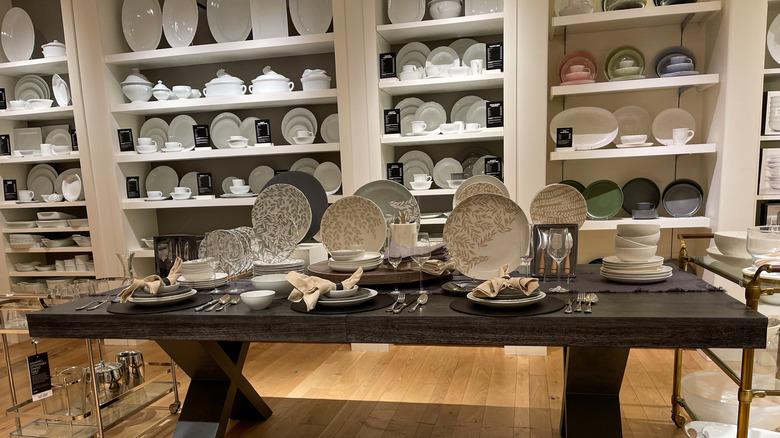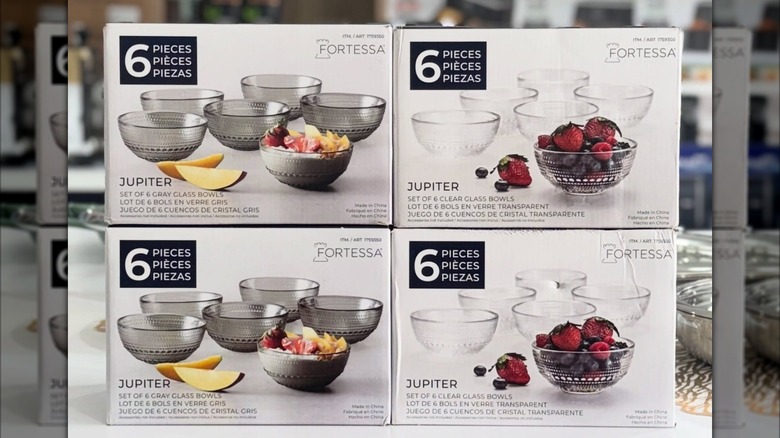These Elegant Williams Sonoma Glass Bowls Are Half The Price At Costco
Creating a beautifully appealing table for dinner parties and festive holiday meals starts with setting out the "good" dishes, glasses, and silverware. But you don't have to wait for a celebratory occasion to make dining feel special with graceful tableware. With some smart shopping, you can get pieces that will elevate everyday meals without giving you sticker shock, like the elegant Fortessa brand Jupiter cereal bowls that Costco has for half the Williams Sonoma price.
The glass bowls feature a hobnail pattern (also called bubble glass), ringed from top to bottom with different-sized bands of smooth, round bumps, and they come in several colors. They're dishwasher safe, made with Fortessa Glass composed of soda, lime, and silica, with magnesium oxide and alumina for greater durability. At 5 inches wide and 2⅓ inches tall, the 13.5-ounce vessels will hold smaller servings of cereal (which some argue is technically a soup), as well as things like fruit, ice cream, and snacks.
Williams Sonoma sells the Jupiter bowls in sets of 4 for $60 — while they're $31.99 for a 6-piece set at Costco, where you can join without paying the full membership fee. Costco's steeply discounted price is the equivalent of $5.33 per bowl, compared to $15 at Williams Sonoma. The Jupiter collection has other pieces too, including plates, tumblers, coffee and espresso cups, martini glasses, a pitcher, and a cake stand. Costco sells the tall and short tumblers, coffee cups, and espresso cups in addition to the cereal bowls, all for significantly less than Williams Sonoma as well.
The history of hobnail glass
The inspiration for Fortessa's Jupiter collection was popular glassware from the turn of the 20th century that was colorful and had detailed patterns. Hobnail glass itself goes further back to the Victorian era, when the style was in fashion. It got its name because the elevated bumps looked like hobnails used on boot soles for traction, and the design was also descriptively called Dew Drop Glass. It was made by blowing or pressing glass into a mold.
Hobnail glass had a resurgence in the mid-20th century when West Virginia company Fenton Art Glass began making it in the late 1930s for glassware, dishware, and home decor. Fenton is the same company that introduced carnival glass in 1907, now a collectible that could be worth thousands, but you can thrift for cheap. The company's hobnail glass took off even more when it introduced an opaque version, hobnail milk glass, which was their flagship moneymaker by 1952. In other variations, hobnail designs' beaded bumps can also be pointier and have different shapes. Fenton ended its traditional glassmaking in 2011, and the popularity of hobnail glass has waned from its heyday, but as the Jupiter collection shows, there are companies still making it.
The Fortessa brand is part of Zweisel Fortessa, which makes glassware, tableware, and cutlery. Fortessa Tableware Solutions began as an American tabletop products company more than three decades ago, and was bought by German glass-making company Zweisel Kristalglass in 2022.


